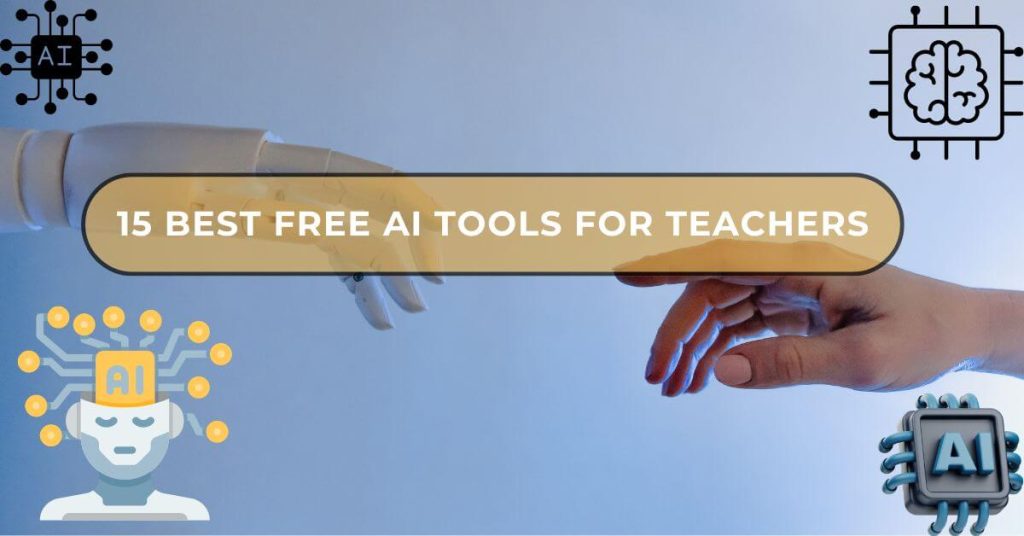In the ever-evolving landscape of education, technology continues to play a pivotal role in enhancing teaching methods and improving learning outcomes. Among the myriad innovations available, AI tools for teachers stand out as powerful allies, offering personalized assistance, streamlining administrative tasks, and fostering engaging learning experiences. This article explores the various AI tools that can revolutionize the classroom, empower educators, and ultimately benefit students.
The Rise of AI in Education
The integration of Artificial Intelligence in education is not merely a trend but a transformative shift that helps address some of the long-standing challenges educators face. From administrative burdens to student engagement issues, AI technologies are designed to alleviate pressures on teachers, allowing them to focus more on student interaction and instruction. As educators embrace these tools, the classroom environment becomes more dynamic, adaptive, and efficient.
Personalized Learning Experiences
One of the most significant advantages of AI tools for teachers is the ability to provide personalized learning experiences. Traditional education methods often struggle to cater to the unique needs of individual students, especially in a diverse classroom filled with various learning styles and paces. AI-powered platforms can analyze student performance data in real-time, identifying strengths and weaknesses. This information can be used to tailor lesson plans that meet specific learner needs, enhancing engagement and understanding.
For example, platforms like DreamBox Learning and IXL use algorithms to adjust the difficulty of problems based on how well a student performs. This ability to customize learning ensures students remain challenged but not overwhelmed, ultimately leading to better retention of knowledge and skills.
Intelligent Tutoring Systems
AI tools for teachers also include intelligent tutoring systems that can provide one-on-one assistance to students. These systems can simulate a human tutor’s role, offering instant feedback and support outside of classroom hours. Imagine a student struggling with mathematics: an AI tutor can guide them through the concepts at their own pace, providing explanations and additional resources when needed.
Programs such as Carnegie Learning employ sophisticated AI technology to facilitate adaptive learning, enabling students to progress as they master topics. This level of personalized guidance ensures that no student is left behind, particularly those who may need additional help to grasp challenging subjects.
Streamlining Administrative Tasks
Teaching involves a myriad of administrative tasks that can consume valuable time. Grading, tracking attendance, and managing communications with parents can often distract educators from what matters most: teaching. AI tools help alleviate these burdens by automating many of these processes. For instance, platforms like Gradescope allow teachers to streamline grading through automated assessments, saving countless hours that can be redirected to lesson planning and student interaction.
Additionally, AI can assist in communication management, helping to send reminders to students about assignments or upcoming tests. Tools such as ClassDojo serve as bridges between teachers and parents, facilitating seamless communication and enhancing community involvement in the education process.
Enhanced Engagement through Gamification
Engagement is crucial in education, and AI tools for teachers can significantly increase student motivation through gamification. By integrating game-like elements into lessons, educators can turn mundane subjects into exciting challenges that capture students’ interest. Platforms powered by AI can analyze student engagement and adapt games in real-time to hold attention and cater to various skill levels.
For instance, Kahoot! and Quizizz enable teachers to create interactive quizzes that students can participate in through their devices. These platforms leverage AI to track performance and suggest areas for improvement, resulting in a more engaging and effective learning environment.
Data-Driven Insights
Data analytics is one of the most powerful aspects of AI tools. By collecting and analyzing data related to student performance, teachers can gain insights that inform their teaching practices. Understanding which concepts students struggle with most can help educators adjust their instruction strategies, deciding where to focus their efforts.
AI-powered platforms like Edmodo offer valuable dashboards that provide educators with essential metrics about classroom performance and individual student progress. This data-driven approach empowers teachers to make informed decisions, ensuring that their teaching methods align with the needs of their students.
Professional Development and Collaboration
AI tools for teachers don’t solely benefit student learning; they can also enhance professional development. Educators can leverage AI-driven platforms to access resources, collaborate with peers, and engage in online learning communities. These tools provide opportunities for sharing best practices, resources, and strategies that promote continuous growth and development.
Utilizing platforms like TeachFX, educators can receive feedback on their teaching styles and classroom interactions, helping them refine their methods and enhance their practice. This ongoing professional development ultimately leads to better outcomes for students.
Overcoming Challenges
While the advantages of AI tools in education are numerous, it’s important to address the challenges that may arise. Concerns about data privacy, the digital divide, and over-reliance on technology must be managed carefully. Educators, administrators, and policymakers need to collaborate to establish guidelines and frameworks that protect students while harnessing the benefits of AI effectively.
The Future of AI in Education
As we look to the future, the potential for AI tools for teachers is immense. With ongoing advancements in technology, we can expect even more sophisticated tools that further enhance the learning experience. Virtual reality experiences, advanced predictive analytics, and deeper integration of AI into everyday teaching practices will continue to reshape the educational landscape.
In conclusion, AI tools for teachers represent a revolutionary stride towards more effective, engaging, and personalized education. By embracing these innovative technologies, educators now have the opportunity to transform their classrooms into vibrant spaces where all students can thrive. As we continue to explore the capabilities of AI in education, the potential for improving teaching and learning outcomes remains boundless.
